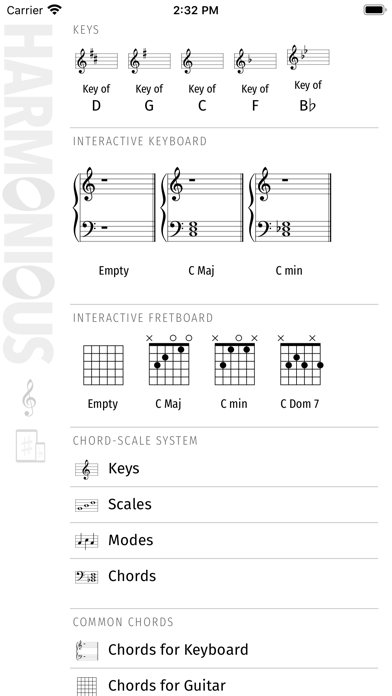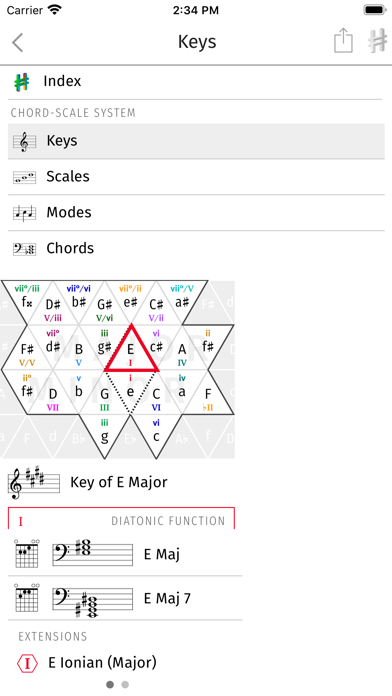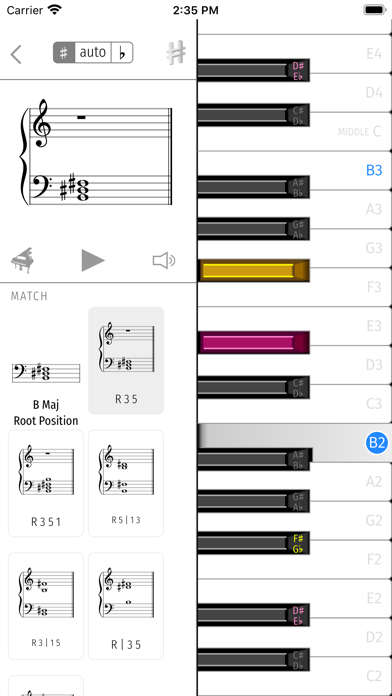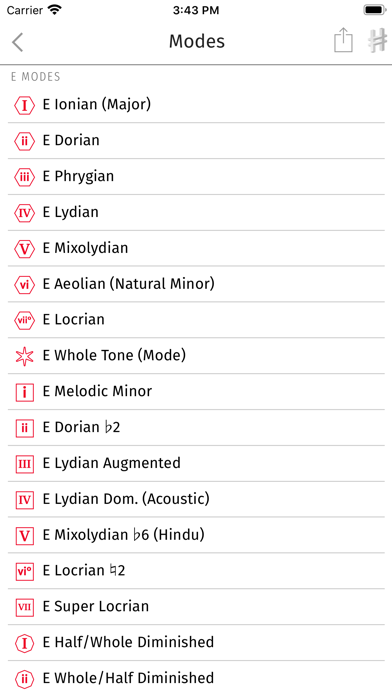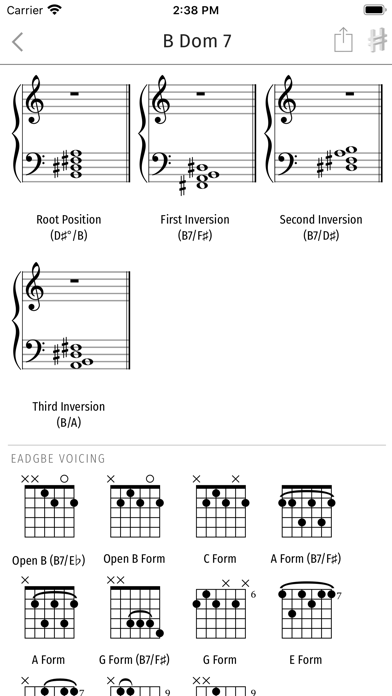Harmonious: Music Theory

Screenshots
Harmonious is the exhaustive piano and guitar chord and scale app for students, composers, songwriters, arrangers, and working musicians.
What if you could learn music theory from a mentor that had all the answers? Start with what you know and follow your curiosity, confident that you have all musical options at your disposal, since Harmonious is the most complete chord and scale map. Find extensions, substitutions and chromatic flavors that lie at the edge of the familiar and the exotic. See connections through the dual lens of chords and scales, linking harmony and melody.
Clean, clear design, bold visualizations, and simple interactions help you find what you are looking for without a lot of fiddling:
— Everything is connected! Tap to navigate and use the convenient back button or index button to jump to different areas of the app with a few taps.
— Tutorials and over one hundred glossary entries teach you music theory from the ground up, presenting a complete view of the sonic landscape. Dozens of useful animations and audio examples help drive home the concepts from musical set theory, traditional harmony, and jazz theory, giving you a broad view you likely won't find anywhere else.
— Interactive piano search helps you determine how notes combine into chords and scales just by selecting notes. Tap a chord or scale to learn how to play it and more importantly, when to play it: its parent keys, modes or scales.
— Interactive fretboard search (guitar standard tuning) helps you determine what you are playing, where to play the same or similar things, and why the chord matters harmonically.
— Audio Feature: Hear chords and scales, and hear notes as you enter them. Toggle between multiple instruments, or mute to learn in silence.
— An interactive circle of fifths reference includes all major and minor keys, showing you triads and seventh chord function with just a simple flick. Extensions (ninths, elevenths, thirteenths) are available as well, with just a tap.
— Interactive scales and mode diagrams illustrate the voice-leading relationships between unordered and ordered 7-note collections (diatonic, acoustic or melodic, harmonic major and minor), allowing navigation with just a simple tap.
— Haptic Feedback, on phone devices that support it
— Share what you learn with links to the website, so other musicians, or you yourself, can find the info later.
The exhaustive reference is built on top of the following:
— Musical set theory reference — Forte codes and prime forms are the foundation of the reference, so you know it is exhaustive
— Roman numeral functions — all chords in each key, including secondary dominants and chromatic, diatonic (major) and minor functions
— Every possible triad (three-note chord) — major and minor, augmented and diminished, suspended chords, augmented sixth chords, and more
— Every possible seventh chord (four-note chord) — diminished, half-diminished, major, minor, dominant, augmented, sixth chords, add nine, and more
— Every mode — of every pentatonic, diatonic, acoustic or melodic minor, whole-tone, diminished (octatonic), harmonic major and minor, and augmented (hexatonic) scale
— Every compatible chord for each mode — including extensions (ninths, elevenths, thirteenths; flat, sharp or natural)
The aim is for Harmonious to be a complete, authoritative, and practical reference on everything harmony-related in twelve-tone equal temperament (and nearby tunings). Harmonious combines elements of musical set theory and atonal theory and jazz theory with harmony and music theory in the extended common practice, as outlined by Professor Dmitri Tymoczko in the 2011 textbook, A Geometry of Music. (See the website for more details and bibliographic references.)
In addition to attempting to be as complete a reference as possible, Harmonious attempts to map out the richness and ambiguity inherent in harmony as precisely as possible.
What’s New
2.1.0: Exhaustive Cluster-free Scales & Modes
— Pages for all Harmonic Major, Harmonic Minor, Double Augmented Hexatonic, Pentatonic scales and their 21 modes, organized and linked together in meaningful ways, as you would expect from Harmonious
— Graphical visualization of the voice-leading relationships between the 48 transpositions of the 7-note scales (diatonic, acoustic or melodic minor, harmonic major and minor)
— Similar visualizations of the voice-leading relationships between the 28 mode types for those 7-note scales, and the same diagrams for all 336 named 7-note modes
— Tap anywhere in one of these diagrams to navigate to any related scale or mode
— New diagram of two octaves of intervals
— Bug fixed: unreadable white text on white background status bar bug (dark mode)
— Bug fixed: home screen layout fix for split screen mode in landscape
— Bug fixed: compatible chords for two modes of diminished (oct) scale should be split into correct groups
— Various fixes and improvements: eliminate some typos
Version 2.1.0
Version History
App Privacy
The developer, Jared Updike, has not provided details about its privacy practices and handling of data to Apple. For more information, see the developer’s privacy policy
No Details Provided
The developer will be required to provide privacy details when they submit their next app update.
Ratings and Reviews
Ratings and reviews are verified
-
WickedAxe, 02.12.2019AwesomeReally great app!! Still a little buggy, but an amazing amount of info contained and a whole different side to theory that I never knew existed. Thank you for making Show more
-
Synthesizer MIDI, 22.12.2018Artificial intelligence for musicThis app is an essential tool for applying artificial intelligence to the creation of music.
Information
-
Category
-
Age Rating4+
-
Price4.99 USD
-
Size39.88 MB
-
ProviderJared Updike
Languages
English
Copyright
©
2004-2025 Jared Updike. All rights reserved.
